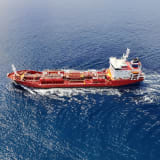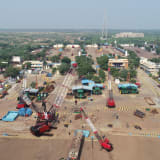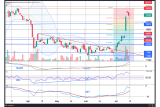
The development of Carbon Capture Storage (CCS) projects has been making good progress globally as the number of projects coming on stream has been growing at a much faster pace since 2017. We count close to 200 CCS projects globally and based on expected volumes, more than 50 liquified CO2 (LCO2) carriers will be required by 2030 to compliment the CCS value chain. For instance, global energy giant Equinor has set bold plans to ramp up their CCS operations to 15-30 mtpa by 2035.
In order to achieve its carbon neutrality goals by 2050, Japan has identified CCS as a critical component to reduce its carbon footprint. Japan emits approximately 1.2 billion tons of CO2 per year and the government plans to capture approximately 10-20% of this (i.e. 120-240 mtpa) by 2050 via CCS. The Japan Energy, Metals and Minerals Japan Corporation (JOGMEC) have identified several CCS projects which they are aiming to support and kick off operations by 2030.

As seen in the chart above, the location for the identified projects ranges between Hokkaido and Kyushu, and is expected to store approximately 13 million tons of CO2 per year.
The projects being developed consists of storing CO2 locally (via pipelines and/or vessels) and also transporting CO2 to be stored at overseas sites. Given that the capture sites and suitable storage sites could be located far away from each other, shipping will start to play a large role in the transportation of CO2 in its liquified state as the scale of CCS continues to grow. Shipping is believed to be the more cost-effective method than pipelines particularly as the distance increases. We expect to see small to medium sized LCO2 carriers being used to transport CO2 domestically in Japan then as the scale of capture grows, we will begin to see larger mid-sized LCO2 carriers being employed to move CO2 towards the depleted oil and gas fields overseas for storage.
Whilst LCO2 carriers are crucial towards commercializing the entire CCS value chain, there are not too many shipbuilders at this point with existing capability to build such LCO2 carriers easily. In addition, such “LCO2 capable” yards are caught up these days with plenty of interests from competing gas carrier segments (LNGC/VLGC/VLAC/VLEC/MGC). We see this as a challenge and expect substantial cost pressure to be added to the CCS value chain for the transportation piece in the medium term. It’s crucial that CSS players start acting now, as we anticipate a large order book with first delivery not expected to be achieved until 2027.
There are challenges that lie ahead for Japan and other nations, but it is necessary for such projects to move with full steam ahead in order to achieve the ambitious CCS goals for a carbon-free future.
By Eugene Quek, Partner & Head of Projects in Japan, SSY
Articles
You may also be
interested in
View allGet in touch
Contact us today to find out how our expert team can support your business













